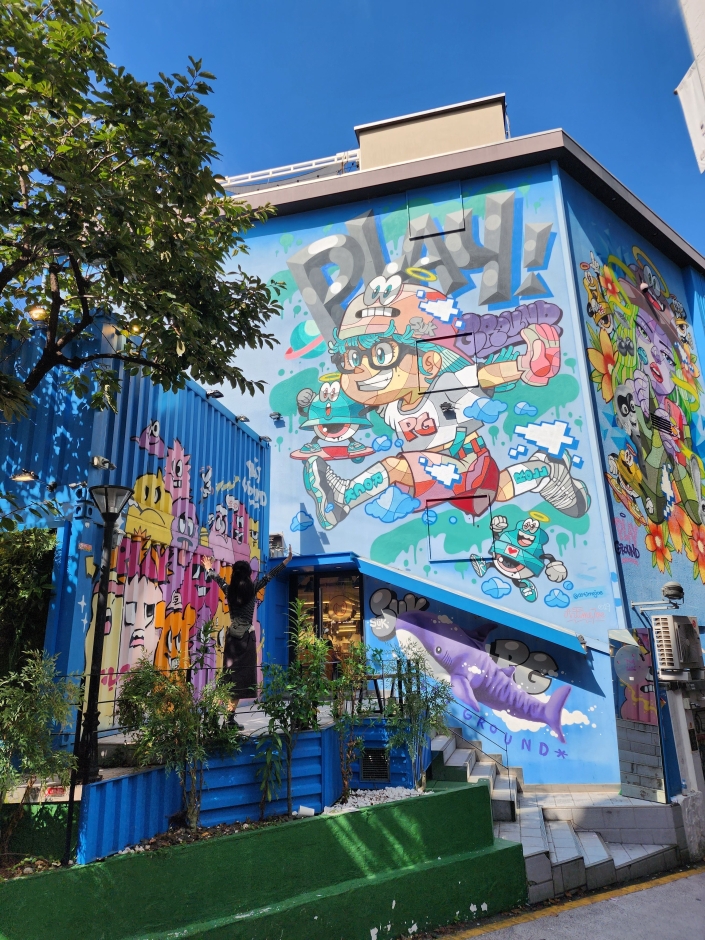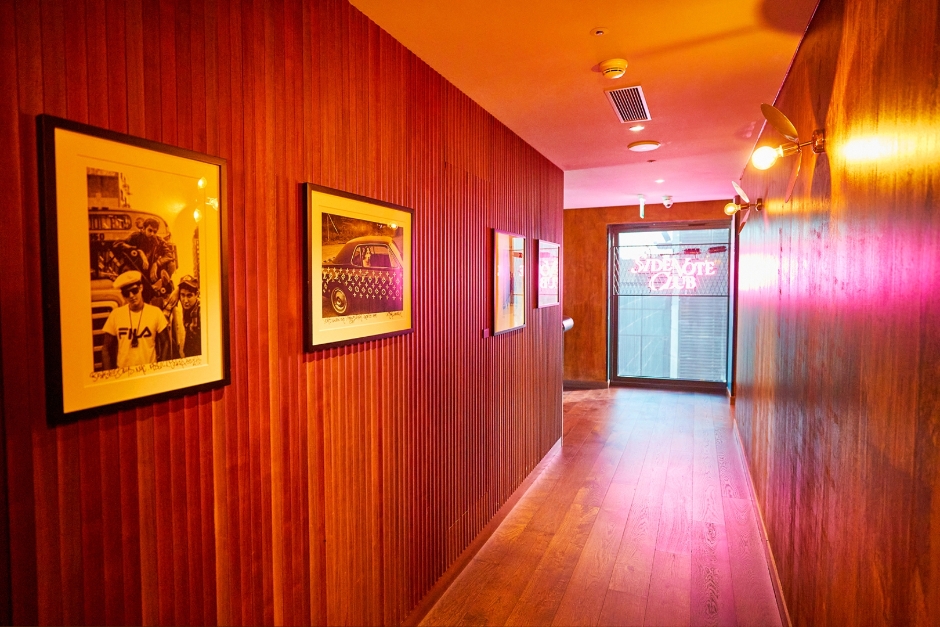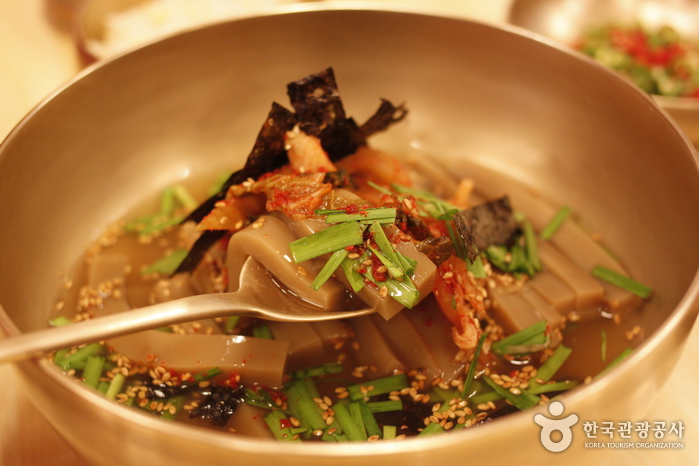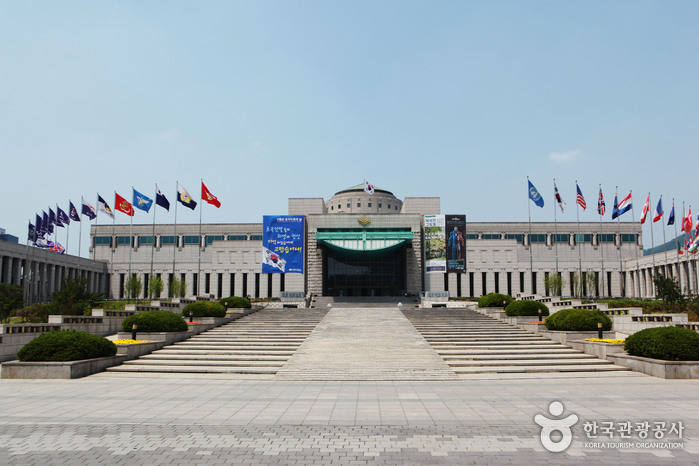Olive Young - Dongmyo Station Branch [Tax Refund Shop] (올리브영 동묘앞역)
4.6Km 2024-04-17
37-1, Jibong-ro, Jongno-gu, Seoul
-
M Playground - Hongdae Branch (엠플레이그라운드 홍대본점)
4.6Km 2024-09-05
94 Eoulmadang-ro, Mapo-gu, Seoul
M Playground is a casual boutique brand known for its signature exterior design of blue shipping containers. The shop does its best to present the latest fashion trends and the hip, street vibe found exclusively in Hongdae. Most visitors range in age between teens and young adults in their 30s, looking for trending clothing, accessories, and other products.
Worksout - Hongdae Ryse Branch [Tax Refund Shop] (웍스아웃 라이즈홍대)
4.6Km 2024-04-19
130, Yanghwa-ro, Mapo-gu, Seoul
-
SIDE NOTE CLUB - RYSE (라이즈 호텔 사이드 노트 클럽)
4.6Km 2024-03-15
130 Yanghwa-ro, Mapo-gu, Seoul
This cocktail bar is located on the 15th floor of RYSE, a hotel near Hongik University. It serves contemporary reinterpretations of classical cocktails and its signature cocktails, including Peanut Butter Delight, Cheese in a Trap, and The Bitter Bliss, which feature interesting ingredients such as homemade peanut bourbon, cream cheese, and preserved omija. Its open rooftop is also very popular. At night, patrons can enjoy their cocktail with the light from old-fashioned light bulbs, the city lights from the Hongdae area, and the view of Seoul beyond.
Gungnara Naengmyeon Mukbap (궁나라냉면묵밥)
4.6Km 2025-08-01
6, Jibong-ro 12-gil, Jongno-gu, Seoul
+82-2-744-4701
Gungnara Naengmyeon Mukbap originally opened in Ansan, serving up delicious meals of naengmyeon and mukbap. The restaurant became popular, and eventually moved to its current location in Seoul. The jiggly acorn jelly goes well wit the sweet and sour broth in mukbap, a favorite summer-time dish. Visitors can also order the dish with a warm broth for a delicious and healthy dish year round.
Homi Art Shop - Hongdae Branch [Tax Refund Shop] (호미화방 홍대)
4.6Km 2024-04-18
1F, 20, Hongik-ro 3-gil, Mapo-gu, Seoul
-
Understar Seoul - Seogyo Branch [Tax Refund Shop] (언더스타서울 서교)
4.6Km 2024-04-23
90, Eoulmadang-ro, Mapo-gu, Seoul
-
Golfzon Market - Yaksu Branch [Tax Refund Shop] (골프존마켓 약수)
4.6Km 2024-04-19
214, Dongho-ro, Jung-gu, Seoul
-
The War Memorial of Korea (전쟁기념관)
4.7Km 2022-12-29
29, Itaewon-ro, Yongsan-gu, Seoul
+82-2-709-3144
The War Memorial of Korea, located in Yongsan-gu, Seoul, exhibits and preserves materials related to the Korean War and serves as a national moral educational venue. It was established on June 10, 1994 by the War Memorial Service Korea Society to commemorate the noble sacrifice of patriotic martyrs. The museum houses approximately 33,000 artifacts with about 10,000 on display at indoor and outdoor exhibitions. There are six separate indoor halls, including Expeditionary Forces Room, Patriotic Memorial Room, War History Room, 6·25 Korean War Room, Development Hall and Large Machinery Room. The outdoor exhibition showcases large-sized weapons. Visitors of all ages from children to adults can also participate in 20 various educational programs and diverse cultural events such as military music and honor guard events, drawing contest, cultural event and more. The character of War Memorial of Korea is ‘Mudori’ featuring a helmet symbolizing the protection of the nation and a bay leaf meaning peace.
E-Mart - Eunpyeong Branch [Tax Refund Shop] (이마트 은평)
4.7Km 2024-04-22
111, Eunpyeong-ro, Eunpyeong-gu, Seoul
-
![Olive Young - Dongmyo Station Branch [Tax Refund Shop] (올리브영 동묘앞역)](http://tong.visitkorea.or.kr/cms/resource/87/2878187_image2_1.jpg)

![Worksout - Hongdae Ryse Branch [Tax Refund Shop] (웍스아웃 라이즈홍대)](http://tong.visitkorea.or.kr/cms/resource/71/2889571_image2_1.jpg)



![Golfzon Market - Yaksu Branch [Tax Refund Shop] (골프존마켓 약수)](http://tong.visitkorea.or.kr/cms/resource/43/2878743_image2_1.jpg)

![E-Mart - Eunpyeong Branch [Tax Refund Shop] (이마트 은평)](http://tong.visitkorea.or.kr/cms/resource/84/2889084_image2_1.jpg)
 English
English
 한국어
한국어 日本語
日本語 中文(简体)
中文(简体) Deutsch
Deutsch Français
Français Español
Español Русский
Русский